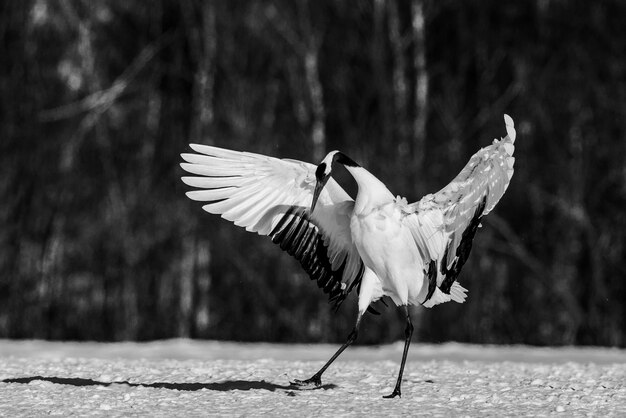Table of Contents
ToggleIntroduction to Black and White Birds in Alabama
Alabama, renowned for its diverse avian population, is home to an array of captivating black and white bird species. These striking avians hold immense significance within the state’s ecological tapestry, boasting unique features that set them apart. Let’s delve deeper into these remarkable creatures, exploring their species diversity, habitats, behaviors, conservation efforts, and their impact on Alabama’s tourism.
Species of Black and White Birds in Alabama
Eastern Towhee
One notable species, the Eastern Towhee, distinguishes itself with its bold black and rufous coloration. These ground-foraging birds thrive in brushy habitats across the state, emitting their characteristic “drink-your-tea” call.
Black-and-White Warbler
The elegant Black-and-White Warbler, adorned with striking zebra-like patterns, gracefully navigates tree trunks in search of insects. Their presence adds an artistic flair to Alabama’s forests.
White-Throated Sparrow
With its crisp black-and-white head stripes and melodic whistling, the White-Throated Sparrow graces Alabama’s winter landscapes, captivating birdwatchers with its beauty and song.
Downy Woodpecker
The Downy Woodpecker, sporting a striking black-and-white pattern, drums rhythmically on trees, demonstrating their vital role in the ecosystem by controlling insect populations.
Habitat and Behavior
These black and white birds prefer diverse habitats, from woodlands to urban parks. Their feeding habits vary; some primarily forage on insects, while others consume seeds and berries. During the breeding season, they construct intricately designed nests in secluded areas, ensuring the survival of their offspring.
Conservation Efforts
Despite their resilience, black and white bird species face habitat loss and climate change threats. Alabama champions several conservation initiatives, emphasizing preserving these avian habitats. Citizen science programs actively engage the community in monitoring and protecting these vulnerable species.
Birdwatching and Tourism
Alabama’s picturesque landscapes attract avid birdwatchers to renowned spots like the Wheeler National Wildlife Refuge and Mobile Bay. The burgeoning birdwatching culture enriches enthusiasts’ lives and contributes significantly to the state’s tourism industry.
Conclusion
In conclusion, Alabama’s black and white bird species symbolize the state’s rich biodiversity and serve as ambassadors for conservation efforts. Their presence in diverse habitats underscores the importance of preserving ecosystems, while their allure attracts tourists and fosters a thriving birdwatching community.
FAQs
- Are black and white birds common in Alabama?
Black and white bird species are relatively common across Alabama, showcasing a diverse range of avian life.
- What threats do these birds face in Alabama?
Habitat loss, climate change, and human interference threaten these bird species significantly.
- How can individuals contribute to bird conservation in Alabama?
Engaging in citizen science programs, supporting conservation initiatives, and respecting natural habitats are crucial ways to contribute.
- What makes birdwatching popular in Alabama?
Alabama’s scenic landscapes and diverse bird species attract birdwatchers seeking unique natural experiences.
- Can birdwatching benefit local economies in Alabama?
Absolutely. Birdwatching tourism generates revenue through accommodations, guide services, and local businesses, positively impacting the economy.





